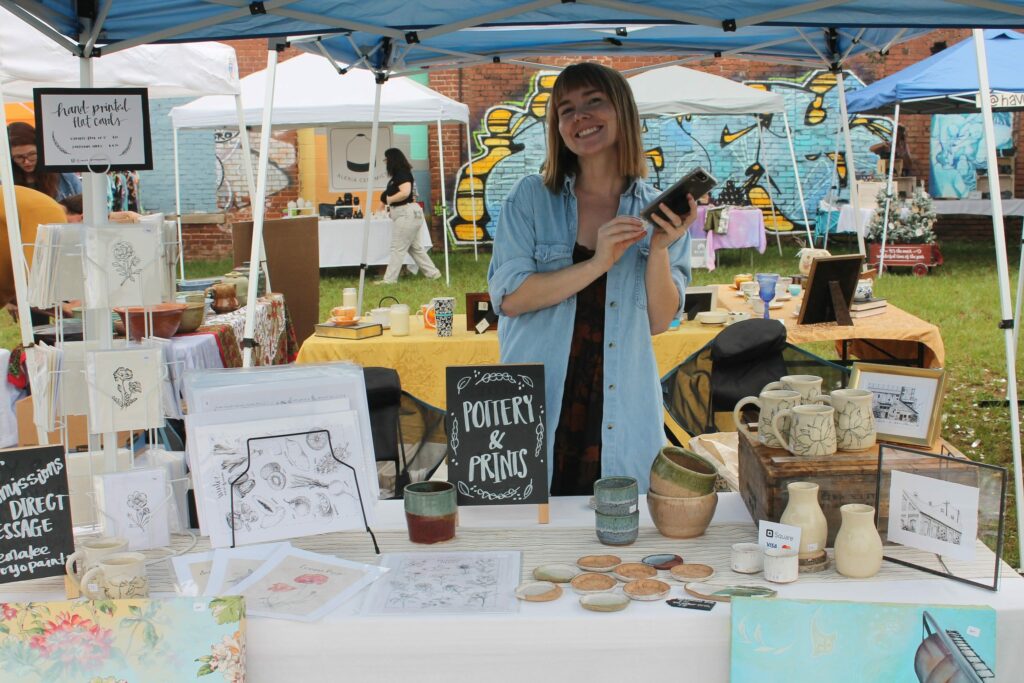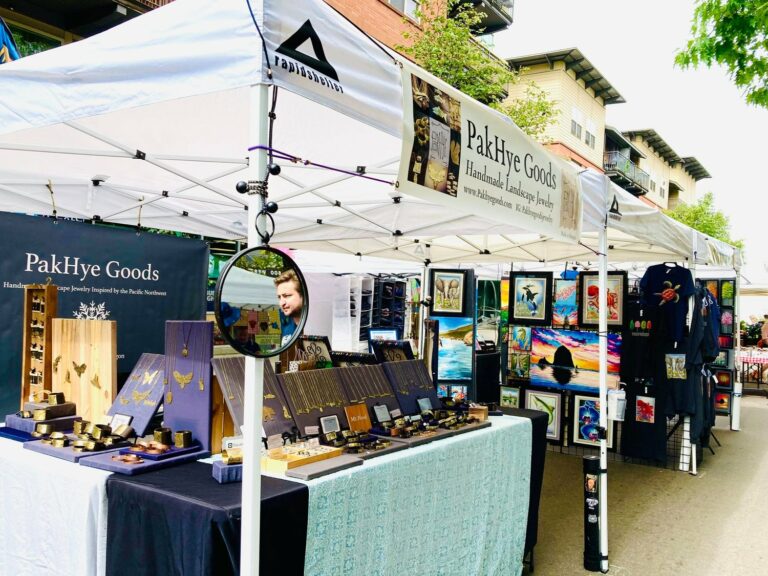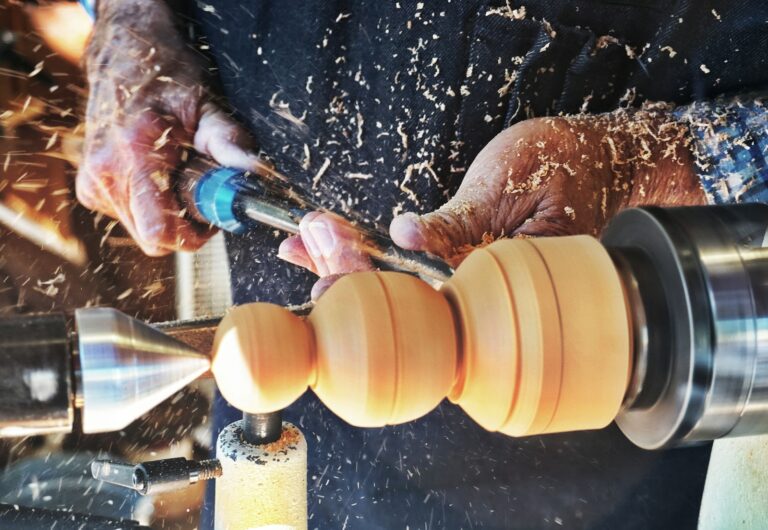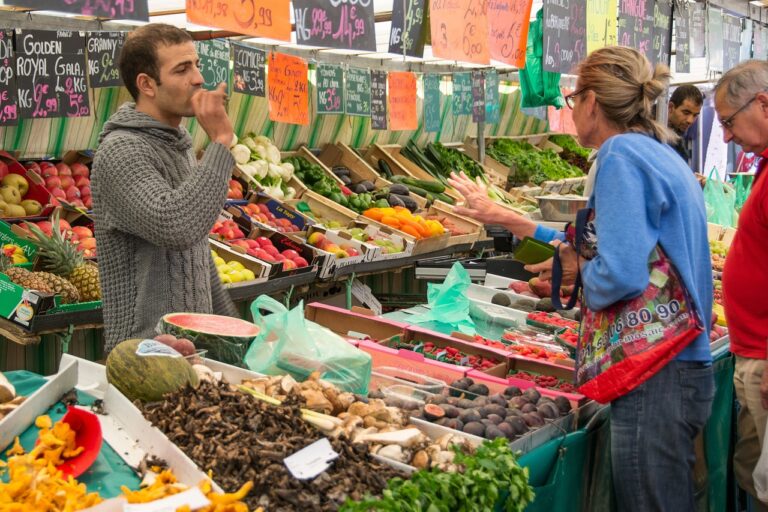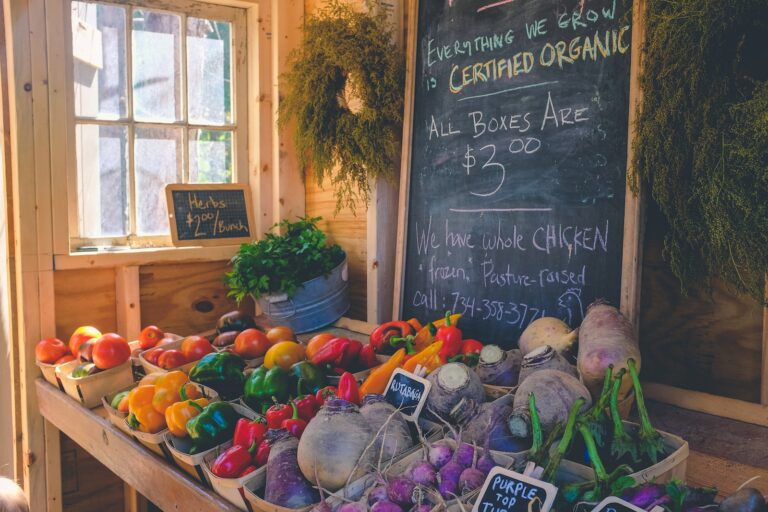Are you a pottery enthusiast looking to turn your passion into a profitable venture? Do you enjoy browsing unique handcrafted pottery pieces that tell a story?
Farmers markets can be an excellent platform for both buying and selling pottery. These vibrant community spaces provide an opportunity for artists and collectors to connect, creating a thriving marketplace for pottery lovers.
When it comes to buying pottery at farmers markets, you’ll be spoiled for choice. From functional ceramics like mugs and bowls to decorative vases and sculptures, there is something to suit every taste and style.
Farmers markets often feature a diverse range of artisans, each with their own distinctive techniques and aesthetics. Whether you prefer traditional pottery styles or more contemporary designs, you’re bound to find something that catches your eye.
If you’re an aspiring pottery seller, farmers markets provide an accessible and supportive environment to showcase and sell your creations. These bustling markets attract a broad customer base, including both locals and tourists, who appreciate the value of handmade goods.
Setting up a booth at a farmers market can be a great way to gain exposure, receive feedback, and build a loyal customer base.
So, if you have a knack for pottery-making and a passion for entrepreneurship, the farmers market scene might just be the perfect avenue for you to share your craft with the world.
Whether you’re looking to expand your collection or kick-start a pottery-selling business, these markets provide a vibrant platform to connect buyers and sellers.
So, grab your shopping bag or set up your booth, and get ready to immerse yourself in the wonderful world of pottery at your local farmers market.
Table of Contents
Choosing the Right Pottery Pieces
When it comes to buying and selling pottery at farmers markets, finding the right pieces can make all the difference. Here are some tips to help you choose the perfect pottery for your customers:
- Know your audience: Consider the demographics of the farmers market attendees. Are they more interested in functional pottery or decorative pieces? Understanding your audience will help you select pottery that appeals to their preferences.
- Inspect the craftsmanship: Take a close look at the pottery you’re considering. Look for well-executed and even glazing, smooth edges, and sturdy construction. Avoid pieces with noticeable cracks, chips, or imperfections that could affect their durability or appearance.
- Consider the size: Farmers markets often have limited space, so it’s important to choose pottery that will fit well on display tables. Opt for a variety of sizes, from small decorative items to larger statement pieces, to cater to different customers’ needs and available space.
- Evaluate the uniqueness: Stand out from the competition by offering pottery that is unique and eye-catching. Look for pieces with interesting shapes, patterns, or textures. Handmade pottery often has individual characteristics that set it apart from mass-produced alternatives.
- Price range: Consider the pricing of your pottery pieces. While handmade pottery can be more expensive due to the craftsmanship involved, it’s essential to strike a balance between quality and affordability. Offering a range of price points ensures that customers with different budgets can find something they love.
| Tip | Description |
|---|---|
| 1 | Know your audience |
| 2 | Inspect the craftsmanship |
| 3 | Consider the size |
| 4 | Evaluate the uniqueness |
| 5 | Price range |
Remember, the key to success in selling pottery at farmers markets is to understand the preferences of your customers and offer them pottery pieces that are well-crafted, visually appealing, and reasonably priced.
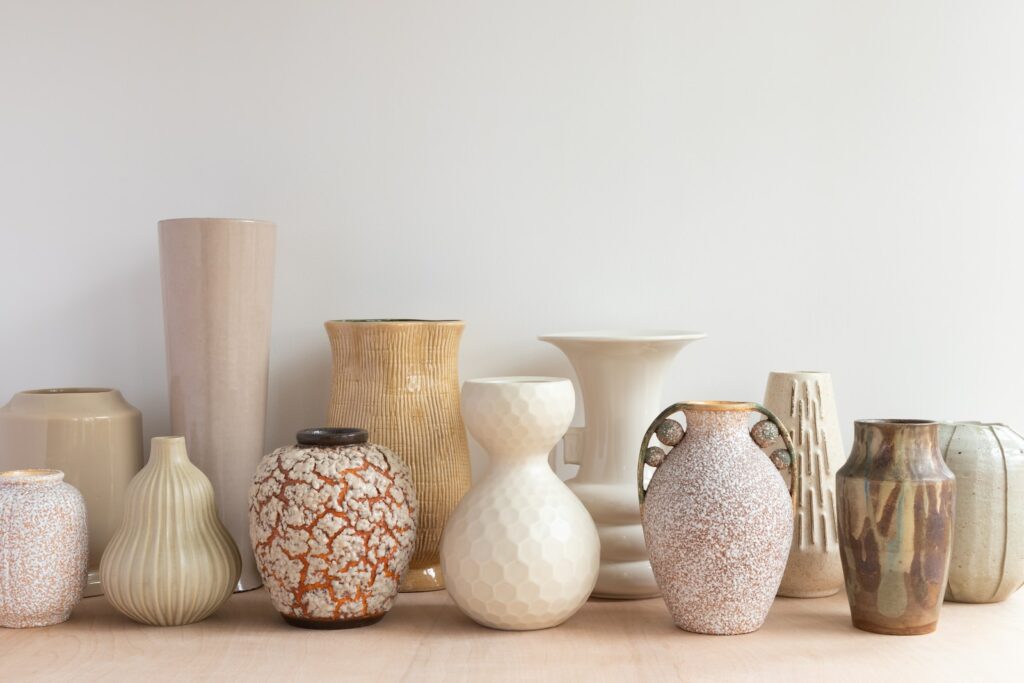
Researching Farmers Markets
When it comes to buying and selling pottery at farmers markets, doing your research beforehand can make all the difference. Here are some tips to help you navigate the world of farmers markets and find the best opportunities for buying and selling pottery:
- Locate Farmers Markets: Start by finding farmers markets in your area. You can use online directories or ask locals for recommendations. Make a list of the markets that seem promising to you.
- Visit Farmers Markets: Take the time to visit different farmers markets as a potential buyer. Pay attention to the market atmosphere, the types of vendors present, and the overall foot traffic. This will give you a better understanding of the market dynamics and which markets may be suitable for selling pottery.
- Evaluate Market Demographics: Consider the demographics of the customers who attend each farmers market. Are they likely to be interested in handmade pottery? Look for markets that attract a diverse audience with an appreciation for locally made crafts.
- Talk to Vendors: Approach pottery vendors at farmers markets and strike up conversations. Ask them about their experiences, the market’s rules and regulations, and whether they think selling pottery is profitable. Vendors can provide valuable insight and advice based on their firsthand experiences.
- Assess Market Fees and Requirements: Each farmers market may have its own set of fees, permits, and requirements for vendors. Research and compare these factors to find the market that suits your budget and meets your needs.
- Consider Market Size: The size of a farmers market can influence the level of competition and potential customer base. Smaller markets may offer a more intimate setting, while larger ones may attract more customers. Decide which environment aligns better with your selling strategy.
Remember, the key to success when buying and selling pottery at farmers markets is to find the right market that aligns with your business goals and target audience. By doing your research, you’ll be able to make informed decisions and maximize your chances of success.
| Researching Farmers Markets |
|---|
| Steps |
| 1. Locate Farmers Markets |
| 2. Visit Farmers Markets |
| 3. Evaluate Market Demographics |
| 4. Talk to Vendors |
| 5. Assess Market Fees and Requirements |
| 6. Consider Market Size |
Preparing Your Pottery for Sale
When it comes to selling pottery at farmers’ markets, it’s important to make sure your pieces are attractive, clean, and well-prepared. Here are a few tips to help you get your pottery ready for sale:
- Clean and inspect your pottery: Before taking your pottery to the farmers market, give each piece a thorough cleaning. Remove any dust, dirt, or smudges to showcase your work in its best light. Inspect each piece for cracks, chips, or any other damage that may affect its saleability.
- Price your pottery: Determine the appropriate prices for your pottery pieces. Consider factors such as size, complexity, materials used, and your own expertise as a potter. Create clear and legible price tags or labels for each piece so that potential buyers can easily see the cost.
- Organize your display: Set up an attractive and organized display for your pottery at the farmers market. Use tables, shelves, or stands to showcase your pieces in an eye-catching manner. Arrange your pottery in a way that allows customers to see each piece clearly.
- Provide information: Include information about your pottery and your creative process. Customers often appreciate knowing the story behind the pieces they purchase. Consider creating a small sign or flyer that shares details about your techniques, inspiration, and any special features of your pottery.
- Consider packaging: If you have smaller pottery items or sets, consider packaging them attractively. This can make your products more appealing to customers and also protect them from damage during transportation. You may use simple boxes, bags, or even wrap them in tissue paper with a ribbon.
Remember, the goal is to make your pottery stand out and encourage potential customers to take a closer look. By following these tips, you’ll be well-prepared to showcase and sell your pottery at the farmers market. Good luck with your pottery sales!
| 1. | Clean and inspect your pottery |
| 2. | Price your pottery |
| 3. | Organize your display |
| 4. | Provide information |
| 5. | Consider packaging |
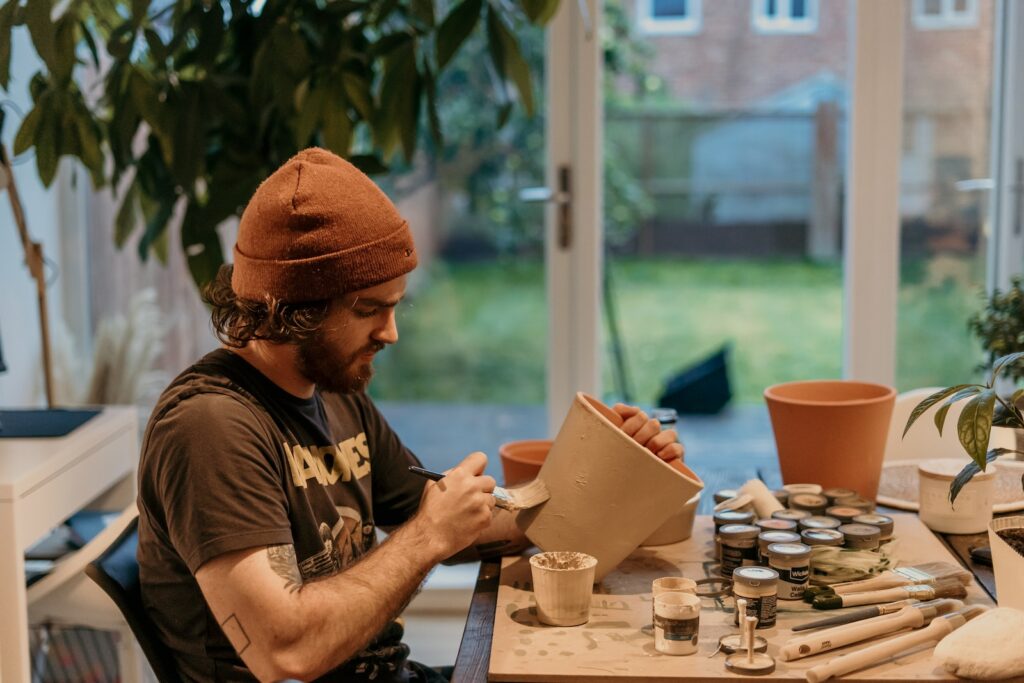
Pricing Your Pottery
Setting the right price for your pottery at the farmers market is crucial to attract customers and make sales. Here are a few factors to consider when pricing your pottery:
- Material Costs: Calculate the cost of the clay, glazes, and other materials used in creating your pottery. This will give you a baseline for determining the minimum price you should charge.
- Labor and Time: Factor in the time and effort you put into creating each piece. Consider how long it takes to throw, trim, glaze, and fire each item. Don’t forget to account for the skill and expertise you’ve developed over time.
- Market Research: Research what other potters at the farmers market are charging for similar items. Take note of their pricing strategies and consider how your pottery compares in terms of quality, uniqueness, and craftsmanship.
- Size and Complexity: Larger or more complex pieces often require more materials and time. Consider adjusting the price accordingly to reflect the effort and resources invested.
- Competition: Keep an eye on the competition and adjust your prices accordingly. If there are similar items available at a lower price, you may need to reconsider your pricing strategy.
- Perceived Value: Highlight the unique features, craftsmanship, and artistic qualities of your pottery to enhance its perceived value. This can justify a higher price and differentiate your products from mass-produced alternatives.
Remember, finding the sweet spot between affordability for customers and profitability for yourself is key. Regularly review and adjust your pricing based on feedback from customers and your own sales data.
Pricing Factors Table
| Pricing Factors | Description |
|---|---|
| Material Costs | Calculate the cost of clay, glazes, and other materials used in your pottery. |
| Labor and Time | Consider the time and effort spent on each piece, including throwing, trimming, glazing, and firing. |
| Market Research | Analyze the pricing strategies of other potters at the farmers market, taking into account quality and uniqueness. |
| Size and Complexity | Larger or more intricate pieces may require greater investment in materials and time. |
| Competition | Be aware of similar products offered at lower prices and adjust accordingly. |
| Perceived Value | Emphasize the craftsmanship and artistic qualities of your pottery to justify higher prices. |
By considering these factors and staying in tune with market trends, you can establish fair and competitive pricing for your pottery at the farmers market.
Setting Up Your Booth
Setting up your pottery booth at a farmers market can be a fun and rewarding experience. It’s not just about showcasing your beautiful creations, but also about creating an inviting space for potential buyers. Here are a few tips to help you set up your booth effectively:
- Choose an eye-catching booth layout: Design your booth in a way that highlights your pottery and makes it stand out from the rest. Arrange your pieces in an organized and visually appealing manner. Consider using props, such as plants or fabric, to add depth and visual interest.
- Display your pottery securely: Make sure your pottery is well-protected and won’t get damaged during the market. Use sturdy shelves or display racks to showcase your pieces at varying heights. Arrange them in a way that allows customers to see and touch them without the risk of accidentally knocking something over.
- Label and price your pottery: Clearly label each piece with its name, price, and any relevant information. This way, customers can easily identify and make a purchasing decision. Consider using small tags or stickers that won’t detract from the aesthetics of your pottery.
- Create an engaging atmosphere: Play some soft background music or provide a pleasant scent to create a welcoming ambiance. Consider offering live pottery demonstrations to draw in curious onlookers. Engage with customers, answer their questions, and share interesting details about each piece.
- Promote your booth on social media: Leverage the power of social media to spread the word about your presence at the farmers market. Share sneak peeks of your latest pottery designs, post about any special promotions or discounts you’ll be offering, and invite your followers to visit your booth. Don’t forget to use relevant hashtags to reach a wider audience.
Remember, setting up your booth is just the first step. To make the most of your farmers market experience, be prepared to interact with potential customers, provide exceptional customer service, and have a good understanding of your pottery and its unique selling points. Happy selling!
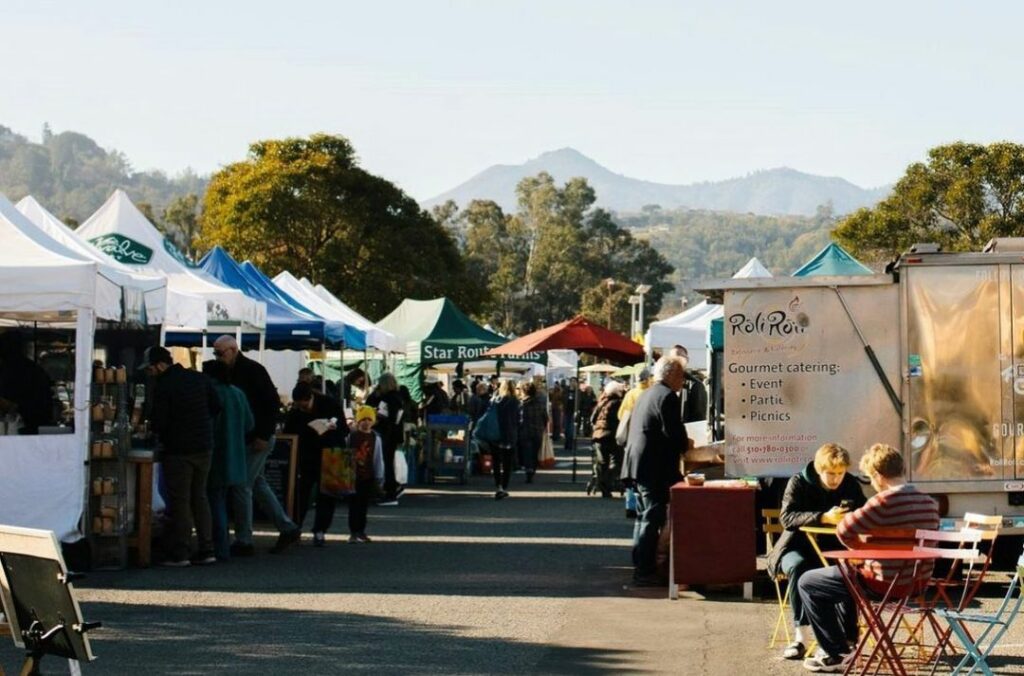
Displaying and Presenting Your Pottery
When it comes to selling your pottery at a farmers market, how you display and present your pieces plays a crucial role in attracting potential buyers. Creating an enticing and visually appealing setup will help showcase the beauty and uniqueness of your pottery. Here are a few tips to help you display and present your pottery effectively:
1. Create a Cohesive Theme
- Choose a theme or style that reflects the essence of your pottery collection.
- Use complementary colors, textures, and materials to create a visually pleasing display.
- Consider incorporating props or backdrops that enhance the overall aesthetics.
2. Arrange Pottery in an Organized Manner
- Group similar pieces together to make it easier for customers to browse.
- Experiment with different arrangements to find the most appealing layout.
- Use varying heights and angles to add visual interest to the display.
3. Highlight Key Features and Details
- Place spotlight or accent lighting to highlight intricate details and craftsmanship.
- Use descriptive labels or tags to provide information about each pottery piece.
- Display a few pieces in a way that allows customers to touch and feel the texture.
4. Offer a Range of Price Points
- Display pottery with varying price points to cater to different budgets.
- Clearly label each piece with its price to eliminate any confusion.
- Consider offering special promotions or discounted sets to attract customers.
5. Keep it Neat and Tidy
- Regularly clean and dust your pottery display to keep it looking fresh.
- Arrange items neatly and ensure there is enough space for customers to navigate.
- Have a clean tablecloth or backdrop to create a visually appealing backdrop.
Remember, creating an attractive display for your pottery is all about enticing customers with a visually pleasing setup that highlights the unique qualities of your pieces. By implementing these tips, you’ll be able to catch the eyes of potential buyers at the farmers market. Happy selling!
| Tips for Displaying and Presenting Your Pottery |
|---|
| Create a Cohesive Theme |
| Arrange Pottery in an Organized Manner |
| Highlight Key Features and Details |
| Offer a Range of Price Points |
| Keep it Neat and Tidy |
Marketing Your Pottery
When it comes to selling pottery at a farmers market, effective marketing is crucial to attract customers and increase your sales. Here are some strategies to help you market your pottery successfully:
1. Showcase Your Unique Style and Craftsmanship
- Highlight the unique features and aesthetic appeal of your pottery.
- Display a diverse range of designs to cater to different tastes and preferences.
- Emphasize the craftsmanship and attention to detail that goes into each piece.
2. Create Eye-Catching Displays
- Arrange your pottery in an attractive and organized manner to catch the attention of passersby.
- Utilize props and creative elements that complement your pottery’s style.
- Consider using colorful signage or banners to draw attention to your booth.
3. Offer Demonstrations and Workshops
- Conduct live demonstrations to showcase the pottery-making process and engage with customers.
- Organize workshops where customers can learn basic pottery techniques or create their own small pieces.
- These interactive experiences can generate interest and make your pottery more memorable.
4. Provide Product Descriptions and Storytelling
- Use descriptive and engaging language to highlight the features and benefits of each pottery piece.
- Share stories about your inspiration, the materials used, and the significance behind your designs.
- This personal touch can establish a deeper connection with customers and make your pottery more meaningful to them.
5. Offer Special Deals and Promotions
- Provide incentives such as discounts, buy-one-get-one offers, or gift with purchase to entice customers.
- Promote limited-edition or seasonal collections to create a sense of exclusivity.
- Encourage repeat sales by offering loyalty rewards or referral programs.
6. Leverage Social Media and Online Platforms
- Utilize platforms like Instagram, Facebook, or Pinterest to showcase your pottery and reach a wider audience.
- Share high-quality images and engaging content that reflect your pottery’s style and story.
- Connect with relevant communities, influencers, and bloggers to expand your online presence.
Remember that effective marketing is a continuous process. Keep experimenting with different strategies to find what works best for your pottery business. With a combination of creativity, engaging displays, and strong storytelling, you can attract more customers to your farmers market booth and increase your pottery sales.

Interacting with Customers
When it comes to buying and selling pottery at farmers markets, one of the most important aspects is the interaction with customers. Building rapport and creating a positive experience can help you attract more buyers and increase your sales. Here are some tips to help you effectively interact with customers:
- Make a Friendly Greeting: Start by offering a warm and friendly greeting to everyone who visits your pottery booth. A simple smile and “Hello, how can I help you today?” can go a long way in making people feel welcome and valued.
- Engage in Conversation: Take the time to engage in conversation with potential customers. Ask them about their interests and preferences, and share interesting facts about your pottery pieces. This will help create a connection and make the shopping experience more enjoyable.
- Provide Product Information: Be knowledgeable about your pottery products and share information about their unique features, materials used, and any special techniques involved in their creation. Customers appreciate knowing the backstory of the items they are considering purchasing.
- Offer Demonstrations: Consider offering live pottery demonstrations at your booth. This allows customers to see your skills in action and provides a captivating experience. Demonstrations can also generate interest and curiosity, attracting more visitors to your booth.
- Display Samples and Examples: Showcase a varied selection of pottery pieces at your booth. Arrange them in an eye-catching manner, making it easy for customers to appreciate the craftsmanship and variations of your work. Having examples of how the pottery can be incorporated into everyday life can also inspire customers.
- Be Attentive and Approachable: Be attentive to your customers’ needs and be ready to answer any questions they may have. Make yourself approachable by standing near your booth and being available to assist customers. Avoid personal distractions, like being on your phone, as it may deter potential customers.
Remember, the key to successful customer interactions is to be sincere, friendly, and knowledgeable about your pottery. Building trust with your customers will not only result in sales but also encourage positive word-of-mouth recommendations. Happy selling!
Managing Transactions and Sales
When it comes to buying and selling pottery at farmers markets, managing transactions effectively is key to ensuring a smooth and successful sales process. Here are some tips to help you navigate this aspect of your pottery business:
- Bring Sufficient Change: Make sure you have an ample supply of small bills and coins to provide customers with change. This will help avoid any delays or inconveniences during transactions. It’s a good idea to keep your cash box organized and easily accessible.
- Pricing and Labeling: Clearly label each pottery item with its respective price. Consider using small tags or stickers that won’t damage the pottery but are easily visible to customers. If you have pottery pieces in different price ranges, organize them accordingly to make pricing clear for customers.
- Accepting Payment: Provide multiple payment options to accommodate customer preferences. Cash is the most common form of payment, but having a mobile payment solution like Square or PayPal Here can also be convenient for customers who prefer to pay with their debit or credit cards. Consider offering a “cash-only” discount to encourage cash payments.
- Record Keeping: Keep track of each transaction by maintaining a simple sales register or spreadsheet. Note down the date, item sold, price, and payment method used. This record will help you monitor sales trends, assess the popularity of certain pottery items, and keep your finances organized.
- Display and Packaging: Take care in presenting your pottery items in an appealing manner. Arrange them neatly on your display table, use props if applicable, and consider incorporating signage or a banner to attract attention. Use packaging materials such as tissue paper or small bags to protect pottery pieces and make them ready for gifting.
- Engage with Customers: Be friendly, enthusiastic, and knowledgeable about your pottery items. Engaging with customers creates a positive atmosphere and can lead to more sales. Answer questions, share interesting details about your pottery-making process, and offer suggestions based on customers’ preferences or intended use of the pottery.
By following these tips, you can effectively manage your transactions and sales when buying and selling pottery at farmers markets.
Evaluating Your Farmers Market Experience
Visiting a farmers market can be an exciting and enriching experience, especially when you’re in the market for pottery. To ensure that you make the most out of your farmers market experience, here are a few key aspects to consider:
- Variety and Selection: Take note of the different pottery vendors at the market. Are there multiple vendors with a wide range of pottery styles, colors, and sizes? Having a variety of options will make it easier for you to find the perfect piece.
- Quality and Craftsmanship: Examine the pottery closely. Look for well-crafted pieces that show attention to detail. Check for any cracks, uneven glazes, or other imperfections that might affect the quality and durability of the pottery.
- Pricing and Value: Compare prices between vendors to get an idea of the average market value for the type of pottery you’re interested in. Keep in mind that pricing can vary depending on factors such as size, complexity, and the reputation of the potter. Consider the value you’re getting for the price and make sure it aligns with your expectations.
- Vendor Knowledge and Passion: Engage with the pottery vendors and ask questions about their craft. Genuine passion and knowledge about pottery can enhance your buying experience. Inquire about the materials used, the techniques employed, and any special features of the pottery that catch your eye.
- Customer Reviews and Feedback: While at the farmers market, take the opportunity to chat with other customers who have purchased pottery from the vendors you’re interested in. Their feedback can provide valuable insights and help you make an informed decision.
Remember, each farmers market experience is unique. Use this evaluation guide as a starting point, but ultimately trust your instincts and choose the pottery that speaks to you. Happy pottery hunting!
| Aspect | Key Points |
|---|---|
| Variety and Selection | Multiple vendors, diverse styles, colors, and sizes. |
| Quality and Craftsmanship | Well-crafted pieces, attention to detail, no imperfections. |
| Pricing and Value | Compare prices, consider size, complexity, and reputation. |
| Vendor Knowledge | Engage with knowledgeable vendors, learn about techniques. |
| Customer Reviews | Talk to other customers and gather feedback. |
Conclusion
After exploring the ins and outs of buying and selling pottery at farmers markets, we can conclude that this is a fantastic avenue for both buyers and sellers to connect and appreciate the beauty of handmade ceramics. Let’s recap some key points:
- Supporting local artisans: By purchasing pottery at farmers markets, you are directly supporting local artisans and their craft. This not only helps them financially but also encourages the preservation of traditional pottery-making techniques.
- Unique and one-of-a-kind finds: Farmers markets are treasure troves for unique pottery pieces that you won’t find in mainstream stores. Whether you’re searching for a functional mug or a decorative sculpture, you’re likely to discover something truly special.
- Engaging with the artist: Interacting with the potter behind the artwork adds an element of personal connection and story to your purchase. You can learn about their inspiration, techniques, and even request custom-made pieces for a truly personalized experience.
- Affordability: Contrary to popular belief, pottery at farmers markets can be affordable. While some high-end pieces may have a hefty price tag, you can often find reasonably priced ceramics that fit your budget. Plus, there’s always room for negotiation!
- Educational experience: Farmers markets provide an opportunity to learn more about pottery, different styles, and the creative process. You can ask questions, attend demonstrations, and enhance your understanding of this ancient art form.
In summary, visiting farmers markets for pottery shopping offers a unique and enriching experience. From supporting local artisans to discovering one-of-a-kind pieces, the charm and authenticity of these markets cannot be replicated elsewhere.
So, grab your reusable tote bag, head to a nearby farmers market, and embark on a delightful pottery-hunting adventure!

